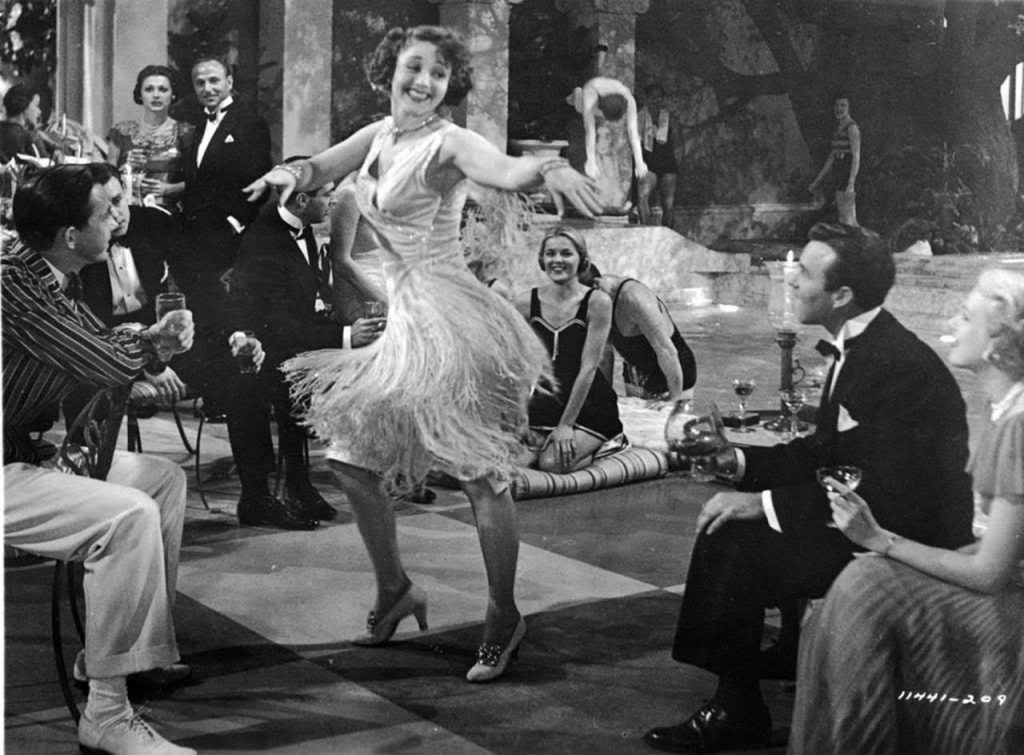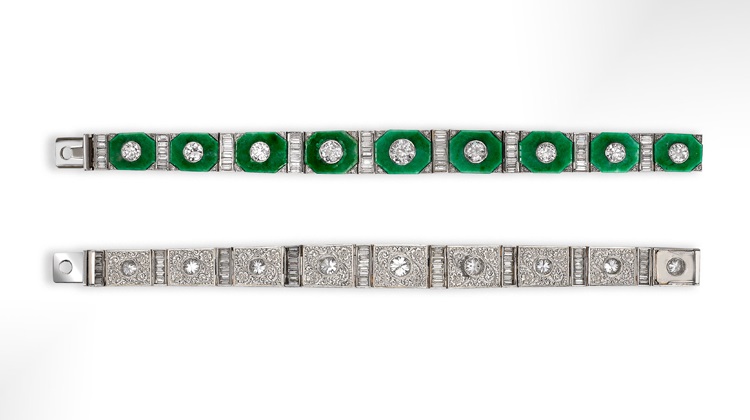Art Deco Period
Influenced by technology, skyscrapers and archaeological discoveries; making its jewels instantly recognisable yet surprisingly eclectic…
Taking its name from the ‘Exposition Internationale des Arts Décoratifs et Industriels’ which took place in Paris in 1925, Art Deco was a daring international decorative arts movement which took the world by storm between 1920-1940. The Art Deco style relied on bold lines, geometric shapes and vibrant colours. Early twentieth century painting styles such as Cubism and the building of the iconic Chrysler Building in New York in 1928 were both a major influence in the development of the movement.
Women’s fashion changed dramatically from the previous Edwardian styles. Elegant yet practical clothing, designed by the likes of Coco Chanel, meant a rethinking of jewellery: it needed to flatter and be more streamlined to fit in with the new silhouette. Geometric patterns were very much favoured. The most common engagement ring stone cuts were emerald, Asscher and baguette. Diamonds, rubies, sapphires and emeralds were the stones of choice and set in platinum. The vibrant colours suited the time, and the booming economy allowed for the use of high quality stones.
A new fashion trend that emerged was hair ornamentation. Women started cutting their hair shorter, which made it more challenging for them to create elaborate styles with their own hair. This allowed jewellers to jump in and fill the gap. Tiaras, clips and combs became all the rage. Earrings also changed significantly. As hair became shorter, earrings became longer. Pendant necklaces and sautoirs followed suit and also increased in length, creating a new relaxed and layered aesthetic. Tassels of pearls and beads accompanied carved gemstones, rings became larger and featured emerald cut or cabochon cut stones whilst bracelets widened and featured geometric patterns and even Egyptian symbols.

Theatre productions with sets designed by artists Matisse and Picasso and ballet performances, such as ‘Ballet Russe’, introduced audiences to vibrant colours, oriental style and Futurism. The discovery of King Tutankhamun’s tomb in 1922 ignited the population’s appetite for Egyptianism. Motifs, including the eye of horus, scarabs and lotus blossoms, were highly desirable and featured on brooches and pins. Architectural Japanese style motifs of temples and rising suns were depicted perfectly in bold lines and materials such as lapis and carnelian.
The goldsmiths at the time belonged to one of two schools of thought. Bijoutiers-artistes prioritised the design over the materials and were heavily influenced by sculpture and art. The jewels often had a futuristic edge and used techniques such as colour lacquering, which were new to the jewellery craft. Bijoutiers-joailliers were more focused on the gems and materials used; specially cut diamonds in unusual shapes, such as trapeze and triangles, were used to create geometric patterns and set with unusual materials such as rock crystal.
The jewels of the Art Deco era are as relevant today as they were 100 years ago; they reflect today’s desire for jewels that are wearable and versatile yet impactful and evocative.
Antique CLP Page
